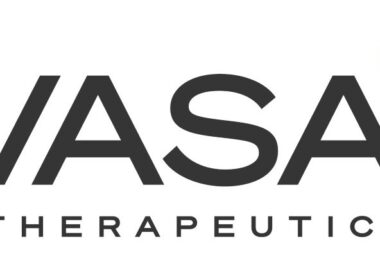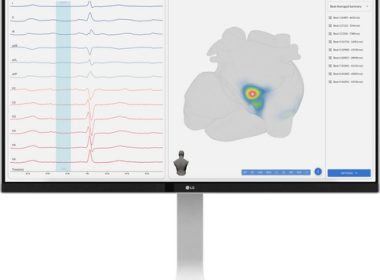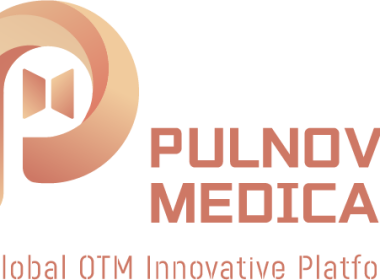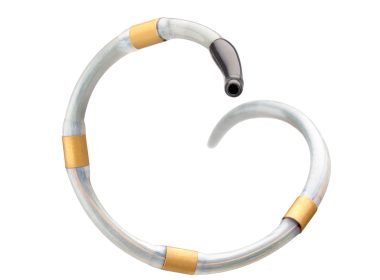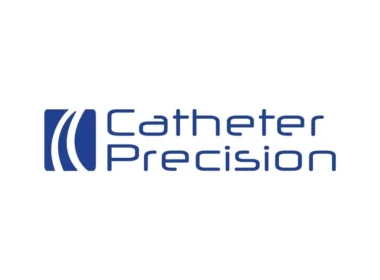PARADIGM: A Prospective rAndomized tRial Assessing the safety and effectiveness of the DurAVR® bIomimetic valve designed for physioloGic flow compared to CoMmercial TAVR devices MINNEAPOLIS and BRISBANE, Australia, Nov. 03, 2025 (GLOBE NEWSWIRE) — Anteris announced today it has received U.S. Food and Drug Administration (FDA) approval to initiate PARADIGM, its global Investigational Device Exemption (IDE) clinical trial which is designed to evaluate the DurAVR® Transcatheter Heart Valve (THV) in patients with severe calcific aortic stenosis and to support a future PMA* submission. “We are extremely pleased to receive FDA approval for the PARADIGM Trial, which allows us to commence patient recruitment in the United States**. This milestone, together with the recent launch of the trial and first patients treated in Denmark, represents a significant achievement and a key step forward in advancing this life-saving technology worldwide for patients living with aortic stenosis, a debilitating and progressive condition,” commented Vice Chairman and CEO, Wayne Paterson. The PARADIGM Trial is co-chaired by Dr. Michael J. Reardon, Allison Family Distinguished Chair of Cardiovascular Research and Professor of Cardiothoracic Surgery at the Houston Methodist Hospital, Texas and Professor Stephan Windecker, Chairman of the Department of Cardiology at Bern University Hospital, Switzerland. About the PARADIGM Trial The PARADIGM Trial is a prospective randomized controlled trial (RCT) which will evaluate the safety and effectiveness of the DurAVR® THV compared to commercially available transcatheter aortic valve replacements (TAVRs). This head-to-head study will enroll approximately 1000 patients across the Unites States, Europe and Canada in the ‘All Comers Randomized Cohort’ with 1:1 randomization of patients who will receive either the DurAVR® THV or TAVR using commercially available and approved THVs. The PARADIGM Trial will assess non-inferiority on a primary composite endpoint of all-cause mortality, all stroke and cardiovascular hospitalization at one year post procedure. The PARADIGM Trial is designed to provide the robust clinical evidence required to support an application to the FDA for Premarket Approval in the United States, with CE Mark approval anticipated to progress in parallel to the PMA. For further information, please refer to ClinicalTrials.gov (ClinicaTrials.gov ID NCT07194265). *A Premarket Approval (PMA) application requires a high level of clinical evidence to demonstrate reasonable assurance of safety and effectiveness for the intended use. Randomized controlled trials are generally considered Level 1 evidence, the highest level for determining the effectiveness of interventions in evidence-based medicine given RCTs minimize bias and allow a clear comparison between treatment groups. **Subject to Institutional Review Board (IRB) approval About Anteris Anteris Technologies Global Corp. (NASDAQ: AVR, ASX: AVR) is a global structural heart company committed to designing, developing, and commercializing cutting-edge medical devices to restore healthy heart function. Founded in Australia, with a significant presence in Minneapolis, USA, Anteris is a science-driven company with an experienced team of multidisciplinary professionals delivering restorative solutions to structural heart disease patients. Anteris’ lead product, the DurAVR® Transcatheter Heart Valve (THV), was designed in partnership with the world’s leading interventional cardiologists and cardiac surgeons to treat aortic stenosis – a potentially life-threatening condition resulting from the narrowing of the aortic valve. The balloon-expandable DurAVR® THV is the first biomimetic valve, which is shaped to mimic the performance of a healthy human aortic valve and aims to replicate normal aortic blood flow. DurAVR® THV is made using a single piece of molded ADAPT® tissue, Anteris’ patented anti-calcification tissue technology. ADAPT® tissue, which is FDA-cleared, has been used clinically for over 10 years and distributed for use in over 55,000 patients worldwide. The DurAVR® THV System is comprised of the DurAVR® valve, the ADAPT® tissue, and the balloon-expandable ComASUR® Delivery System. Forward-Looking Statements This announcement contains forward-looking statements including statements regarding the intent for the PARADIGM Trial. Forward-looking statements include all statements that are not historical facts. Forward-looking statements generally are identified by the words “believe,” “project,” “expect,” “anticipate,” “estimate,” “intend,” “budget,” “target,” “aim,” “strategy,” “plan,” “guidance,” “outlook,” “may,” “should,” “could,” “will,” “would,” “will be,” “will continue,” “will likely result” and similar expressions, although not all forward-looking statements contain these identifying words. These forward-looking statements are subject to a number of risks, uncertainties, and assumptions, including those described under “Risk Factors” in Anteris’ Annual Report on Form 10-K for the fiscal period ended December 31, 2024 that was filed with the SEC and ASX. Readers are cautioned not to put undue reliance on forward-looking statements, and except as required by law, neither ATL or Anteris assume any obligation to update any of these forward-looking statements to conform these statements to actual results or revised expectations. For more information: Investor Relationsinvestor@anteristech.comDebbie OrmsbyAnteris Technologies Global Corp.+61 1300 550 310 | +61 7 3152 3200 Investor Relations (US)mchatterjee@bplifescience.comMalini Chatterjee, Ph.D.Blueprint Life Science Group+1 917 330 4269 Website www.anteristech.comX @AnterisTechLinkedIn https://www.linkedin.com/company/anteristech
Regulatory
Anteris Receives First European Regulatory Clearance to Commence DurAVR® THV Global Pivotal Trial (the “PARADIGM Trial”)
MINNEAPOLIS and BRISBANE, Australia, Oct. 15, 2025 (GLOBE NEWSWIRE) — Anteris Technologies Global Corp. (Anteris or the Company) (NASDAQ: AVR, ASX: AVR) a global structural heart company committed to designing, developing, and commercializing cutting-edge medical devices to restore healthy heart function, announced today it has received regulatory clearance from the Danish Medicines Agency to initiate the DurAVR® Transcatheter Heart Valve (THV) global pivotal trial in patients with severe calcific aortic stenosis (the “PARADIGM Trial”). Patient recruitment at Danish centers is expected to begin in 4Q 2025. PARADIGM: A Prospective rAndomized tRial Assessing the safety and effectiveness of the DurAVR® bIomimetic valve designed for physioloGic flow compared to CoMmercial TAVR devices With the first regulatory clearance secured, Anteris is positioned to drive the global PARADIGM Trial through the addition of further countries and sites in the near term, with planned expansion across the United States, Europe and Canada. Management believes strong enthusiasm from investigators is expected to translate into efficient recruitment and timely study advancement. “Receiving initial approval in Europe is an important milestone as it signals the launch of the global PARADIGM Trial. This groundbreaking study has been designed with world-leading experts and is attracting significant interest from clinicians globally, reflecting the potential for DurAVR® to transform care for patients with aortic stenosis,” said Anteris Chief Medical Officer, Chris Meduri, M.D. “The PARADIGM Trial enables us to bring promising new technology to patients across all surgical risk groups, building on the growing body of evidence supporting the DurAVR® THV’s favorable hemodynamic performance. We look forward to contributing meaningful data which could support both PMA* and CE Mark approvals,” said Dr. Michael Reardon and Professor Stephan Windecker, Study Co-Chairs of the global PARADIGM Trial. “The PARADIGM trial is a multi center global study which, if successful, will result in multiple approvals and labels for the DurAVR® THV. This is a watershed moment in the company’s life cycle and marks the beginning of the commercialization planning phase as we march towards global approvals. Anteris is excited to be able to allow access to an increasing pool of patients globally who will benefit from this life saving technology. The commencement of this trial reflects the commitment and tireless work of our talented Anteris team, as well as our Physician and Scientific Advisors. The company would like to express its gratitude to the physicians, patients and shareholders who have been fundamental in developing this important new therapy,” said Vice Chairman and CEO, Wayne Paterson. In parallel, an Investigational Device Exemption (IDE) application remains under review by the U.S. Food and Drug Administation (FDA). Anteris continues to expect FDA approval in the near term, which will allow initiation of study sites in the PARADIGM Trial in the United States, pending Institutional Review Board (IRB) approval. About the PARADIGM Trial The PARADIGM Trial is a prospective randomized controlled trial (RCT) which will evaluate the safety and effectiveness of the DurAVR® THV compared to commercially available transcatheter aoric valve replacements (TAVRs). This head-to-head study will enroll approximately 1000 patients in the ‘All Comers Randomized Cohort’ with 1:1 randomization of patients who will receive either the DurAVR® THV or TAVR using commercially available and approved THVs. The PARADIGM Trial will assess non-inferiority on a primary composite endpoint of all-cause mortality, all stroke and cardiovascular hospitalization at one year post procedure. For further information, please refer to ClinicalTrials.gov (ClinicaTrials.gov ID NCT07194265). The planned expansion across other geographies includes additional cohorts. *A Premarket Approval (PMA) application requires a high level of clinical evidence to demonstrate reasonable assurance of safety and effectiveness for the intended use. Randomized controlled trials are generally considered Level 1 evidence, the highest level for determining the effectiveness of interventions in evidence-based medicine given RCTs minimize bias and allow a clear comparison between treatment groups. About Anteris Anteris Technologies Global Corp. (NASDAQ: AVR, ASX: AVR) is a global structural heart company committed to designing, developing, and commercializing cutting-edge medical devices to restore healthy heart function. Founded in Australia, with a significant presence in Minneapolis, USA, Anteris is a science-driven company with an experienced team of multidisciplinary professionals delivering restorative solutions to structural heart disease patients. Anteris’ lead product, the DurAVR® Transcatheter Heart Valve (THV), was designed in partnership with the world’s leading interventional cardiologists and cardiac surgeons to treat aortic stenosis – a potentially life-threatening condition resulting from the narrowing of the aortic valve. The balloon-expandable DurAVR® THV is the first biomimetic valve, which is shaped to mimic the performance of a healthy human aortic valve and aims to replicate normal aortic blood flow. DurAVR® THV is made using a single piece of molded ADAPT® tissue, Anteris’ patented anti-calcification tissue technology. ADAPT® tissue, which is FDA-cleared, has been used clinically for over 10 years and distributed for use in over 55,000 patients worldwide. The DurAVR® THV System is comprised of the DurAVR® valve, the ADAPT® tissue, and the balloon-expandable ComASUR® Delivery System. Forward-Looking Statements This announcement contains forward-looking statements, including statements regarding the planned expansion of the PARADIGM Trial, the results of the PARADIGM Trial, the contours of the PARADIGM Trial, and the timing of the IDE approval. Forward-looking statements include all statements that are not historical facts. Forward-looking statements generally are identified by the words “believe,” “project,” “expect,” “anticipate,” “estimate,” “intend,” “budget,” “target,” “aim,” “strategy,” “plan,” “guidance,” “outlook,” “may,” “should,” “could,” “will,” “would,” “will be,” “will continue,” “will likely result” and similar expressions, although not all forward-looking statements contain these identifying words. These forward-looking statements are subject to a number of risks, uncertainties, and assumptions, including those described under “Risk Factors” in Anteris’ Annual Report on Form 10-K for the fiscal period ended December 31, 2024 that was filed with the SEC and ASX. Readers are cautioned not to put undue reliance on forward-looking statements, and except as required by law, Anteris does not assume any obligation to update any of these forward-looking statements to conform these statements to actual results or revised expectations. For more information: Investor Relations Investor Relations (US)investor@anteristech.com mchatterjee@bplifescience.comDebbie Ormsby Malini Chatterjee, Ph.D.Anteris Technologies Global Corp. Blueprint Life Science Group+61 1300 550 310 | +61 7 3152 3200 +1 917 330 4269 Websitewww.anteristech.com X@AnterisTech LinkedInhttps://www.linkedin.com/company/anteristech
Vasa Therapeutics Receives FDA IND Clearance to Advance Novel Small Molecule VS-041 for the Treatment of Heart Failure with Preserved Ejection Fraction (HFpEF)
Phase 1c Clinical Trial to Begin Immediately ENCINITAS, Calif. and WROCLAW, Poland, Oct. 13, 2025 /PRNewswire/ — Vasa Therapeutics, (“Vasa”), a private, clinical stage biotechnology company developing novel therapies for cardiovascular and metabolic aging, today announced that the U.S….
Vektor Medical Secures CE Mark for vMap, Bringing the Benefits of Non-Invasive Arrhythmia Mapping to Europe
SAN DIEGO–(BUSINESS WIRE)–Vektor Medical, a medical technology company transforming cardiac arrhythmia care, announced it has received CE Mark for the vMap® System, a non-invasive tool developed with AI that transforms standard 12-lead ECG data into 3D arrhythmia source maps in under a minute. “vMap is emerging as a simple, non-invasive […]
Lexeo Therapeutics Announces Progress in FDA Discussions for Accelerated Approval Pathway and Positive Interim Clinical Data for LX2006 in Friedreich Ataxia Cardiomyopathy
U.S. Food and Drug Administration (FDA) open to pooling data from ongoing Phase I/II studies of LX2006 with pivotal data to support a Biologics License Application (BLA) for Accelerated Approval Interim clinical data show sustained or deepening improvements in the majority of participants across both cardiac and neurologic measures of Friedreich ataxia Participants with abnormal left ventricular mass index (LVMI) at baseline achieved 18% mean reduction in LVMI at 6 months and 23% mean reduction at 12 months, exceeding FDA-aligned target threshold of 10% reduction Clinically meaningful improvement observed in the modified Friedreich Ataxia Rating Scale (mFARS), indicative of slowed disease progression and improved function Company to host webcast today at 8:00 AM ET NEW YORK, Oct. 07, 2025 (GLOBE NEWSWIRE) — Lexeo Therapeutics, Inc. (Nasdaq: LXEO), a clinical stage genetic medicine company dedicated to pioneering novel treatments for cardiovascular diseases, today announced updates to key components of an Accelerated Approval pathway for LX2006 in Friedreich ataxia (FA) cardiomyopathy, alongside new interim clinical data from ongoing Phase I/II studies. “We are encouraged by our recent dialogue with the FDA on LX2006, and we appreciate the Agency’s collaborative spirit as we work to deliver a potentially life-changing therapy to the FA community as efficiently as possible,” said R. Nolan Townsend, Chief Executive Officer of Lexeo Therapeutics. “Given the highly compelling data to date that demonstrate clinically meaningful improvements across both cardiac and neurologic measures of FA, we are now pursuing a development strategy that could enable a smaller pivotal study, given the potential to pool data with the ongoing Phase I/II trials, as well as potentially assessing the co-primary endpoint of LVMI earlier than 12 months. This approach could accelerate our overall timeline toward a BLA submission for LX2006 under the Accelerated Approval pathway.” FDA Feedback to DateIn response to questions from the Company regarding the possibility of a faster path to a BLA, the FDA has indicated openness to a BLA submission for accelerated approval that includes clinical data from the ongoing Phase I/II studies of LX2006 pooled with new clinical data to be generated in the planned pivotal study. To enable pooling of these data to support licensure, Lexeo will submit enhanced manufacturing comparability data and meet an additional nonclinical requirement prior to the initiation of the planned pivotal study, given the Company’s intention to leverage its optimized, high-yield Sf9-baculovirus manufacturing platform for future clinical and commercial drug supply, compared to the adherent HEK293 process used for Phase I/II clinical supply. The FDA also previously agreed to evaluate the co-primary endpoint of LVMI at a time point earlier than 12 months. Lexeo continues to engage with the FDA on the pivotal protocol and comparability. In discussions to date, there have been no changes to the previously disclosed alignment with the FDA on key parameters related to the LX2006 planned registrational study. Collectively, Lexeo believes this regulatory feedback has the potential to reduce the size and length of the planned pivotal study, possibly accelerating the overall timeline to BLA submission. Lexeo plans to initiate the LX2006 pivotal study as soon as possible in the first half of 2026, pending finalization of the trial protocol. FDA has previously granted Breakthrough Therapy, Regenerative Medicine Advanced Therapy (RMAT), Orphan Drug and Fast Track designations to LX2006, and admitted LX2006 into the CMC Development and Readiness Pilot (CDRP) program. LX2006 Interim Clinical Update (n=16 participants with >6-months of follow-up)Updated interim clinical data from both ongoing Phase I/II studies of LX2006 continue to show encouraging safety and efficacy, exceeding the thresholds previously agreed with FDA for co-primary endpoints LVMI and frataxin expression. Left ventricular mass index (LVMI): Among participants with abnormal baseline LVMI (key inclusion criteria for pivotal study; n=6): 6 of 6 participants achieved LVMI measurements within the normal range as of latest visit5 of 6 participants achieved >10% improvement by 12 months18% mean improvement in LVMI at 6 months and 23% mean improvement at 12 months, exceeding 10% FDA-aligned threshold for pivotal study28% mean improvement in LVMI at 6 months and 33% mean improvement at 12 months in mid- and high-dose cohorts (n=3), suggesting dose-dependent improvement Among participants with normal baseline LVMI (n=10), the majority demonstrated LVMI improvement or stabilization over time Secondary cardiac biomarkers: 14 of 16 participants achieved >25% reduction in high-sensitivity troponin I from baseline at latest visit14 of 16 participants achieved reduction or stabilization in lateral wall thickness (LWT) from baseline at latest visit Modified Friedreich Ataxia Rating Scale (mFARS): 2.0-point mean improvement from baseline at latest visit across all participants with >6-months of follow-up (n=16)11 of 16 participants achieved reduction or stabilization in mFARS from baseline at latest visit Previously reported data from Lexeo’s ongoing SUNRISE-FA trial (n=8) showed that all study participants achieved increases in frataxin protein expression from baseline at 3 months, with dose-dependent increases observed across cohorts. LX2006 Interim Safety Update (n=17 participants) Treatment with LX2006 has been generally well tolerated with no Grade 3+ SAEs to dateNo clinically significant complement activationMinimal, transient liver function test (LFT) elevationsNo signs of frataxin over-expression observed in cardiac tissueNo participants discontinued from either studyOne previously disclosed, possibly treatment-related Grade 2 event of asymptomatic myocarditis observed one year after dosing Corporate Webcast DetailsLexeo Therapeutics will host a webcast at 8:00 AM ET today, October 7, 2025. Analysts and investors can participate by accessing the webcast live on the News & Events page in the Investors section of Lexeo’s website, www.lexeotx.com. The webcast will be archived on the company’s website following completion of the call, and presentation materials will be available on the Presentations page of the website. About LX2006LX2006 is an AAV-based gene therapy candidate for the treatment of FA cardiomyopathy, the leading cause of death in individuals with FA which affects approximately 5,000 people in the United States. LX2006 is designed to systemically deliver a functional frataxin gene to promote the expression of the frataxin protein and restore mitochondrial function in myocardial cells. LX2006 is being evaluated in two clinical trials, the Lexeo-sponsored SUNRISE-FA Phase 1/2 clinical trial (NCT05445323) and the Weill Cornell Medicine investigator-initiated Phase 1A trial (NCT05302271). LX2006 has been granted Breakthrough Therapy, Regenerative Medicine Advanced Therapy, Orphan Drug, Rare Pediatric Disease and Fast Track designations by the FDA, admitted into the FDA CMC Development and Readiness Pilot (CDRP) program, and granted orphan medicinal product designation by the European Commission. About Lexeo TherapeuticsLexeo Therapeutics is a New York City-based, clinical stage genetic medicine company dedicated to reshaping heart health by applying pioneering science to fundamentally change how cardiovascular diseases are treated. The Company is advancing a portfolio of therapeutic candidates that take aim at the underlying genetic causes of conditions, including LX2006 in Friedreich ataxia (FA) cardiomyopathy, LX2020 in plakophilin-2 (PKP2) arrhythmogenic cardiomyopathy, and others in devastating diseases with high unmet need. Cautionary Note Regarding Forward-Looking StatementsCertain statements in this press release may constitute “forward-looking statements” within the meaning of the federal securities laws, including, but not limited to, Lexeo’s expectations and plans regarding its current product candidates and programs, the structure of and timelines for completion of any current or additional clinical trials required by the FDA, the timing for receipt and announcement of data from any such clinical trials, and the timing and likelihood of potential regulatory developments, trial design changes and approval. Words such as “may,” “might,” “will,” “objective,” “intend,” “should,” “could,” “can,” “would,” “expect,” “believe,” “design,” “estimate,” “predict,” “potential,” “develop,” “plan” or the negative of these terms, and similar expressions, or statements regarding intent, belief, or current expectations, are forward-looking statements. While Lexeo believes these forward-looking statements are reasonable, undue reliance should not be placed on any such forward-looking statements. These forward-looking statements are based upon current information available to the company as well as certain estimates and assumptions and are subject to various risks and uncertainties (including, without limitation, those set forth in Lexeo’s filings with the U.S. Securities and Exchange Commission (SEC)), many of which are beyond the company’s control and subject to change. Actual results could be materially different from those indicated by such forward-looking statements as a result of many factors, including but not limited to: risks and uncertainties related to global macroeconomic conditions and related volatility; expectations regarding the initiation, progress, and expected results of Lexeo’s preclinical studies, clinical trials and research and development programs; the unpredictable relationship between preclinical study results and clinical study results; delays in submission of regulatory filings or failure to receive regulatory approval; liquidity and capital resources; and other risks and uncertainties identified in Lexeo’s Quarterly Report on Form 10-Q for the quarterly period ended June 30, 2025, filed with the SEC on August 14, 2025, and subsequent future filings Lexeo may make with the SEC. New risks and uncertainties may emerge from time to time, and it is not possible to predict all risks and uncertainties. Lexeo claims the protection of the Safe Harbor contained in the Private Securities Litigation Reform Act of 1995 for forward-looking statements. Lexeo expressly disclaims any obligation to update or alter any statements whether as a result of new information, future events or otherwise, except as required by law. Media Response:Media@lexeotx.com Investor Response:Carlo Tanzi, Ph.D.ctanzi@kendallir.com
Daxor Unveils New FDA-Cleared BVA Analyzer Amid Strong Market Demand and Pivotal Clinical Data at HFSA
Three Studies Validate BVA-Guided Care Significantly Cuts Hospital Readmissions and Boosts Survival in High-Cost Heart Failure Segments
Pulnovo Medical Receives two IDE approvals for PADN system’s clinical trials with CMS coverage
SHANGHAI, Sept. 12, 2025 /PRNewswire/ — Pulnovo Medical, a globally recognized leader in medical devices for pulmonary hypertension (PH) and heart failure (HF), is proud to announce that its PADN catheter and generator has received two Investigational Device Exemption (IDE) approvals—HDE…
Microbot Medical® Receives FDA 510(k) Clearance for Its LIBERTY® Endovascular Robotic System
Microbot Medical® Receives FDA 510(k) Clearance for Its LIBERTY® Endovascular Robotic System.
Medtronic receives approval for Symplicity Spyral™ Renal Denervation System in Japan
Japan is now the 77th country to receive regulatory approval for the Symplicity Spyral Renal Denervation System Medtronic, a global leader in healthcare technology, today announced it received approval in Japan from the Pharmaceuticals and Medical Devices Agency (PMDA) for its Symplicity Spyral™ renal denervation (RDN) system, also known as […]
Catheter Precision Receives Approval for LockeT in the United Kingdom
FORT MILLS, S.C., Aug. 18, 2025 (GLOBE NEWSWIRE) — Catheter Precision, Inc. (VTAK – NYSE/American), a US based medical device company focused on developing technologically advanced products for the cardiac electrophysiology market announced registration and approval in the United Kingdom for its LockeT product, a suture retention device. LockeT received CE Mark for European approval and distribution in May 2025. Obtaining registration was the final approval required to launch sales in the UK.


